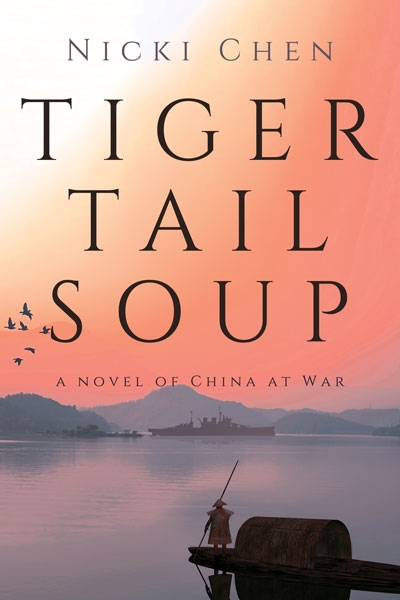 During the holidays my family—seven adults, one child and a teenager—visited the Indianapolis Zoo. Despite the unwieldy size of our group, we succeeded in staying together for a while. (The shark-petting pool with its small hint of danger appealed to us.) Before long, though, some of us rushed through the snake house faster than others, and all bets were off.
During the holidays my family—seven adults, one child and a teenager—visited the Indianapolis Zoo. Despite the unwieldy size of our group, we succeeded in staying together for a while. (The shark-petting pool with its small hint of danger appealed to us.) Before long, though, some of us rushed through the snake house faster than others, and all bets were off.
 Assuming we’d find each other eventually, we wandered through the exhibits, enjoying two inquisitive walruses, and then three graceful giraffes and three huge dirt-loving rhinos.
Assuming we’d find each other eventually, we wandered through the exhibits, enjoying two inquisitive walruses, and then three graceful giraffes and three huge dirt-loving rhinos.
The sun was beginning to set by the time we reached the Tiger Forest Exhibit. Leaning over the heads of fascinated children, I saw a lonely, nervous-looking Amur tiger, pacing so fast past the glass and over the rocks it was hard to get a clear picture of him.
 Later I learned there were other tigers inside, but my mood was already set. I couldn’t help thinking about the worldwide near extinction of tigers. And about my late husband, Eugene, who was born in the Year of the Tiger.
Later I learned there were other tigers inside, but my mood was already set. I couldn’t help thinking about the worldwide near extinction of tigers. And about my late husband, Eugene, who was born in the Year of the Tiger.
Before Eugene and I were married (and after) he told me stories about the tigers that lived in his home province of Fujian. There were thousands of wild tigers in China when he was a child. Thousands! In fact, the subspecies of tiger from his province is believed to be the root or ancestral tiger of all the tigers in the world. Yet now the Amoy tiger (also known as the South China tiger) is almost certainly extinct in the wild.
Why? Loss of habitat and Mao’s “anti-pest” campaign during the Great Leap Forward are factors. But human population growth is the biggest reason. In 1943, when Eugene was five years old, the population of China was just over 531 million. In 2015, it will top 1.39 billion.
Eugene’s tiger story took place during WWII. He was five or six years old and living under Japanese occupation. The Japanese had confiscated all the good rice. The Chinese were left with rice that was so old it turned to dust when you pressed it between your thumb and forefinger. The Japanese also took pigs, chickens and goats, forcing the Chinese farmers into the mountains to hunt for small game.
Competing with the tigers for wild pigs and tufted deer, farmers inadvertently forced the hungry tigers down from the mountains. Two such tigers swam to Amoy Island where they attacked a Chinese woman. Her husband shot one of the tigers but was too late to save his wife.
When the Japanese soldiers arrived, they forbade the removal of the woman’s body. They wanted to use it as bait for the tiger that got away.
The following night, the second tiger returned, and a sharpshooter killed it.
Both tigers’ hearts, livers, and pelts were reserved for the Japanese officers; their meat, for the soldiers. Leftovers were sold to the Chinese.
You’ll find the full story of how the two hungry tigers were shot and one hungry Chinese family made soup out of a chunk of tiger ‘s tail in my novel.
 Tiger Tail Soup is available in bookstores and on Amazon.com and barnesandnoble.com.
Tiger Tail Soup is available in bookstores and on Amazon.com and barnesandnoble.com.




It is so sad that the Lao Ho is almost extinct now (that is how Tiger is pronounced in Hokkian, one of the major tongues spoken in Fujian, which is also the language I speak in my “ghetto”) 😀
I wish I could paint such beautiful tigers. They look so much alive! They look like the mount of Lao Jun. One tiger commands the wind, the other summons the clouds.
In the United States, the bald eagle was brought back from near extinction because of the symbolic meaning it had for Americans. The tiger has great symbolic meaning for Chinese. It’s the king of the beasts. You mentioned Mount Lao Jun. It has a Tiger Leaping Gorge.
Wow, I love your Chinese brush painting — you’re such a talented artist, Nicki (and writer!)
It’s a sad reality to learn about the fate of so many wild animals. Have you read Leaving Time from Jodi Picoult? Even though I don’t like everything in the book, I absolutely love what she writes about the African elephants that are also, like the tigers, on the verge of extinction. As always I like how you tie world events to personal stories. Another great post, Nicki.
Yes, Evelyne. I did read “Leaving Time.” I liked it. I liked the surprise ending, and I loved learning about African elephants. I hope we won’t be seeing elephant and tiger displays some day next to the dinosaurs in museums.
Hi Nicki,
I just returned from seeing a friend whom I had gifted with “Tiger Tail Soup.” She loved the book, lent it to a friend who has a Chinese daughter-in-law. This friend had just finished “White Swan,” and she LOVED your book. Now, Mary has lent it to another friend. I am thinking I should ask Mary to suggest her friends BUY the book, but that seems hard to do.
Anyway, everyone I know loves your book! I would say they are discerning readers…l
Sheila
Sheila, thank you for gifting “Tiger Tail Soup” to a friend. I’m always happy when anyone likes the book, but especially when the person is Chinese.
Gorgeous painting, but a sad end for a glorious species.
Thank you, Marilyn. I hope it won’t be the end of the Amoy tiger–although their chances of survival are slim.
I agree with Janet – the painting is amazing. I just love how you incorporated the details of your husband’s childhood into your book.
Constance, I just came upon some more stories about the Amoy tiger. This one taken from “China Coast Family” by John Caldwell tells of the tigers near Xiamen before WWII. Caldwell, a missionary from Tennessee, claims to have killed 48 tigers during his time there.
Your painting is exquisite.
I mourn the loss of animals AND their habitat due to man’s unrelenting greed and selfishness.
“If a man aspires towards a righteous life, his first act of abstinence is from injury to animals.” ~ Albert Einstein
“Life is life ~ whether in a cat, or dog, or man. The idea of difference is a human conception for man’s own advantage.” ~ Sri Aurobindo
Despite man’s “unrelenting greed,” some people are working hard to save the Amoy tiger. This YouTube video includes an interview with one such person: Li Quan.
It is really sad how the natural habitat of so many animals has been destroyed by humans. Animals which had no issues with being endangered just few decades ago are now gone because of us humans.
I hope that someday soon people in those areas realize what value they are losing by destroying the nature.
One ray of hope is the Laohu rewilding project in South Africa to save China’s tigers.
What a gorgeous painting, Nicki!
Thank you, Janet.
I agree, simply fantastic!